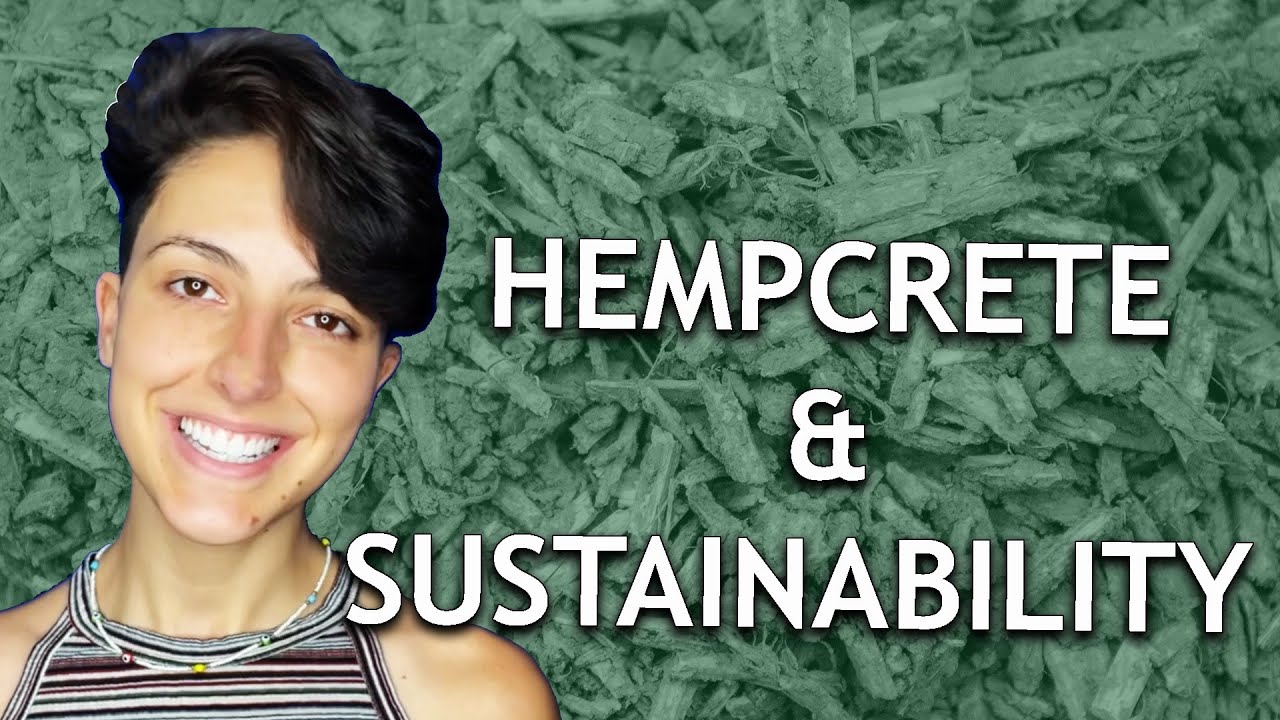At the request of one of our amazing community members (and thank you, by the way!) we’re exploring hempcrete. Now you know what it isn’t, let’s learn what it is and where it’s extremely useful as possibly the most sustainable building material.
*************
Website – https://www.greenswrm.com
IG – https://www.instagram.com/greenswrm/
Twitter – https://twitter.com/greenswrm
Get started tracking your carbon footprint today!
https://apps.apple.com/us/app/swrm/id1437980734
*******
It all starts from the hemp plant, which is related to cannabis, but with one important difference: very low levels of tetrahydrocannabinol (THC) – the psychoactive compound in cannabis, so hemp can’t be used to get high. There are uses for literally every single part of the plant – thousands of uses – from textiles to medicine to paper to food…and as a building material.
Hemp is one of the planet’s most efficient carbon sequesters, able to absorb 1.63 tons of CO2e for every ton grown; it’s one of the fastest growing plants on Earth, going from seed to maturity in 3-4 months and hence a full life cycle within one growing season; and it’s hardy, able to tolerate weather extremes and grow with very little water, making it suitable even in drought prone areas. It helps to improve the nitrogen balance of soil, so it doesn’t need fertilizers and makes a great rotation crop for winter cereals, priming the soil to higher quality. It has even been used to intentionally absorb toxins and heavy metals from soil, currently being used for this in Chernobyl. It sends roots down deep, which helps keep the soil from eroding and simultaneously aerates it. It is sown with a no-till method, which cuts down on the emissions of carbon from plowing, from disturbance of the soil itself and the machinery required. It is resistant to many pests and diseases, alleviating the need for pesticides – and simultaneously making it a great choice as a cover crop to reduce the need for pesticides for the main crop.
So how is it used in the building industry?
Hempcrete is a non-load bearing composite material which is made from combining the woody part of the hemp plant stem, called hurd, with lime, called the binding, and water. The hempcrete is very lightweight and doesn’t require heat for curing, so the embodied carbon of a building using hempcrete is low. The primary cure takes about 6 weeks, and the overall curing takes about 50 years to complete, in a process called carbonation…absorbing atmospheric carbon day in, day out! The limestone binding is energy and carbon intensive in production, but the hemp absorbs even more than this produces when it’s installed. Hemp can be basically grown anywhere, meaning it can be local to the processing plant, which is yet another way using hempcrete lowers the embodied emissions of a building project. It is resistant to humidity and mold because it dries quickly, and maintains its structure when wet – meaning it can survive floods. It can be used in areas prone to seismic activity due to being less likely to crack under movement, and it’s fire-proof.
However, it’s this low density, non-load bearing aspect which means it isn’t a replacement for concrete. It can fill cavities, but requires a timber or steel frame to take the load. This product has extremely good acoustic absorption and even better thermoregulation properties. So what it does replace is fibreglass insulation, sheet rock, concrete or wool insulation blocks or batts, either in walls or ceilings. Which is fabulous news! Adequate insulation in our homes is vital to stay comfortable, but more importantly to decrease energy use from both heating and cooling.
Hempcrete can be produced in blocks, which slide and join together with ease and can be installed 70% faster than building with traditional material, whether inside a dry wall or as an exterior wall. Or it can be poured within a frame and lightly tamped down, or as another alternative it can be sprayed onto the framework. The hempcrete can then be plastered or covered right over.
More recently there’s been production of HempWool, which replaces traditional, often abrasive and irritating insulation panels for use in places like floors, ceilings, and partition walls, or even RVs, and can be retrofitted. It can also be used to produce countertops and cabinets, and as a plaster or sealant.
So despite hempcrete not being the golden ticket out of using carbon intensive concrete all together, the use cases do mean it’s an awesome alternative in certain situations. And as this material provides natural, safe, effective, carbon absorbing, sustainable insulation, that’s great news environmentally. Thankfully, the 2018 Farm Bill meant that regulations in the US caught up with the rest of the world, allowing Industrial Hemp to be grown.
source



